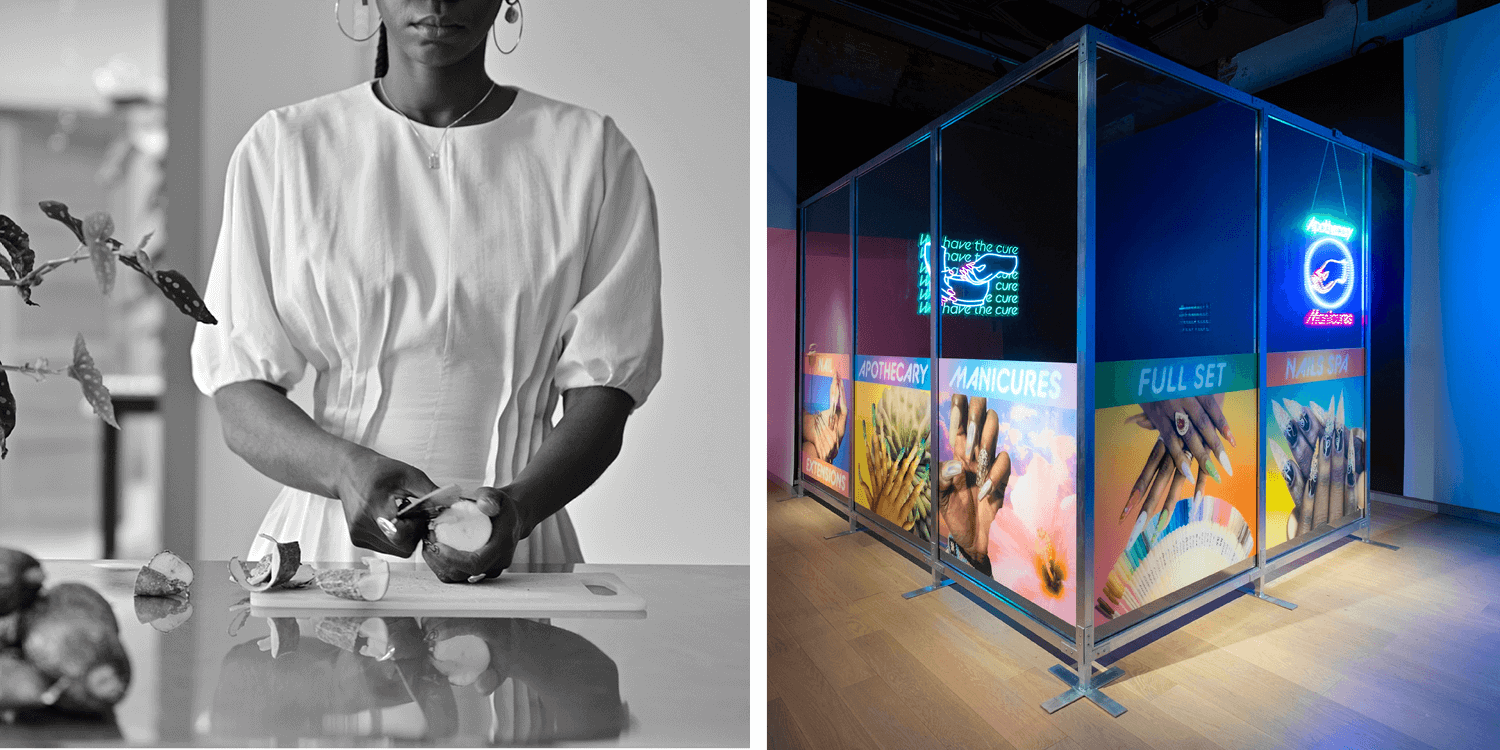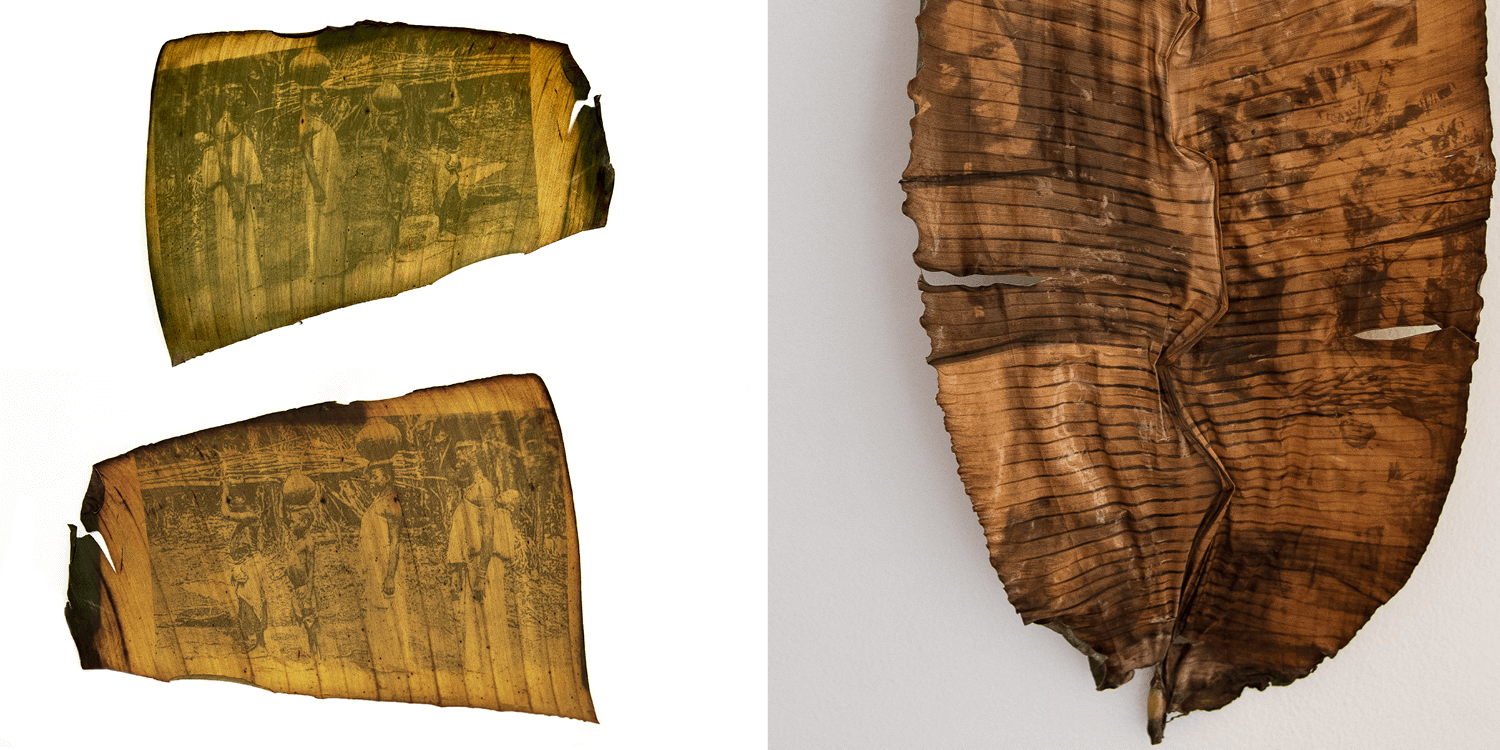Kosisochukwu Nnebe, an artist, writer and an awardee of G.A.S. Foundation's annual fellowship, joins us for a seven-week residency at the G.A.S. Farm House in Ijebu. Her multifaceted practice spans sculpture, installation, photography, film, performance, sound, textiles, and multidisciplinary research. Kosisochukwu's work critically examines how culinary practices and food can function as counter-archives – what Brett Kashmere defines as “incomplete and unstable repositories” – that can challenge official narratives and open us up to subaltern perspectives. A central focus of her current research is cassava, particularly its historical use as poison with which to resist colonial oppression in the Caribbean.
During this residency, she aims to delve deeper into cassava's integral role in Nigerian culture, especially in cuisine and textiles. She is eager to trace its migration from the Caribbean to West Africa, where it became a staple due to its famine-resistant properties, and investigate its function as a counter-archive of colonial histories in both regions. She plans to create new works that highlight cassava’s often-overlooked significance, particularly in Yoruba adire textiles and Igbo uli symbolism. With a keen interest in visiting heritage sites and museums including the Osun Osogbo Sacred Groves, Badagry Slave Port and Museum, Museum of West African Art, and the Iganran Pottery Community, she hopes to engage with local artists, farmers, and community members to gather insights on the historical uses of cassava and its role in both physical and cultural adaptation, resistance and survival.
 (L) From 'an inheritance' poster series, 2022. Image courtesy of Kosisochukwu Nnebe. (R) Installation view of 'We Have The Cure', 2024. Image courtesy of Justin Wonnacott.
(L) From 'an inheritance' poster series, 2022. Image courtesy of Kosisochukwu Nnebe. (R) Installation view of 'We Have The Cure', 2024. Image courtesy of Justin Wonnacott.
What is the current focus of your creative practice?
Since 2020, my practice has been exploring the use of foodways—the eating habits and culinary practices of a people, region, or historical period—as counter-archives of colonial histories. Here, I embrace Brett Kashmere’s definition of a counter-archive as “incomplete and unstable repositories” capable of challenging the record of official history. Where official archives inherently bring about issues of accessibility, control, and power, a turn to common foodstuffs as archives opens up subaltern perspectives and approaches to memory-making with which to rewrite history. In creating my works, I employ what Sadiya Hartman calls critical fabulation—the combining of archival research with fictional narrative to fill gaps left in the archives.
One such counter-archive I have been using is cassava—a crop native to the Caribbean that was used by enslaved Africans in 18th-century Jamaica to poison their slave masters. I came across the steps for making this poison in an 18th-century botanical catalog by a British botanist in Jamaica and replicated them as part of a 2022 video work/performance. My most recent solo exhibition, The Seeds We Carry, continued this exploration but focused on what British slave owners called “the thumbnail method”: the practice among enslaved women of concealing the poison under their thumbnails so as to sneak it into the homes of their slave owners. Translating this practice into our contemporary moment, I created a site-specific nail salon installation in the gallery that transformed the nail salon into a site of resistance. Through these projects, I am reimagining such histories of resistance as recipes passed down from generation to generation for how to assert one's subjectivity in the wake of transatlantic slavery.
What drew you to apply for this residency and how do you think it will inform your wider practice?
At the time I applied for this residency, I had just been accepted into a residency in Jamaica, where I would be spending two months on a farm replete with pineapple, banana, citrus, and cassava plants. I was excited to apply for the residency at the G.A.S. Farm House in Ijebu specifically because it would allow me to follow cassava’s migratory route, tracing its journey from the Caribbean and South America to West Africa, initially via the Portuguese as part of the transatlantic slave trade. The beauty of transitioning from the residency in Jamaica to this residency in Ijebu is that it allows for a deeper exchange of stories and histories between both geographies—something that is important to me, given that many of the enslaved people who found themselves in Jamaica were originally from Nigeria. I knew that through this residency, I would be able to question the origins of commonplace crops such as cassava that have come to dominate Nigerian cuisine and life, as well as the uses of these and other crops over time in both the Caribbean and on the continent. It will also help reveal little-known histories of resistance and the ways in which African spiritual traditions work with the natural environment to make sense of and find ways of living in whatever new world we find ourselves in.
 Detail of "A palimpset for the tongue", chlorophyll prints on banana leaf, 2024. Image courtesy of Kosisochukwu Nnebe.
Detail of "A palimpset for the tongue", chlorophyll prints on banana leaf, 2024. Image courtesy of Kosisochukwu Nnebe.
Can you give us an insight into how you hope to use the opportunity?
As part of this residency, I am hoping to engage farmers and community-members in Ikiṣẹ on their knowledge of the history of crops such as cassava that were part of the Columbian exchange and were used by enslaved Africans as poison, survival food, and abortifacient. I want to better understand the extent to which the knowledge of plant-life that kept enslaved Africans alive in places like Jamaica, originated on the continent and was a result of knowledge and spiritual traditions that have a different understanding of the natural environment.
I’m also interested in exploring the various ways in which cassava has become integrated into broader Nigerian culture and society. Made popular because of its famine resistant properties, cassava soon became an essential part of the diet of many Nigerians, becoming so commonplace that it began to be used as a resist in the creation of adire textiles (adire eleko in particular has traditionally been created using cassava starch). Whereas much attention has been paid to the origins and symbolism of the cotton fabric and indigo that make up adire, there has been less discussion of the cassava starch that creates the intricate patterns in adire eleko. This is what I’d like to focus on as part of my residency. Finally, I'm also planning on continuing another body of work I began in Jamaica, which involves creating prints on banana leaves as a way of transforming them into yet another counter-archive of colonial histories.
RESIDENCY ARCHIVE
EVENT: In Dialogue
Event Date: 29th November, 2024
On 29th November 2023, G.A.S. Fellow Kosisochukwu Nnebe led In Dialogue, a virtual conversation with acclaimed Ghanaian artist Ibrahim Mahama. Together, the artists explored their art practices, the social dynamics and the impacts that drive them. The conversation delved into their focus on materiality—jute for Mahama and food for Nnebe—in uncovering colonial histories, as well as their innovative use of space to create community-centric art experiences. This event offered deep insights into artistic expressions as spaces of transformation in the context of state failure and the importance of centring Black aliveness.

Kosisochukwu Nnebe (L) and Ibrahim Mahama (R)
ABOUT KOSISOCHUKWU NNEBE
Kosisochukwu Nnebe is a Nigerian-Canadian conceptual artist and writer. Working across installation, lens-based media and sculpture, Nnebe engages with topics ranging from the politics of Black visibility, embodiment and spatiality to the use of foodways and language as counter-archives of colonial histories. Kosisochukwu’s work has been shown in exhibitions across Canada, including the Montreal Museum of Fine Arts, Plug In ICA (Winnipeg) and the Art Museum of Toronto, as well as Hausen Gallery in New York, Green Space in Miami, and Tolhuistuin Cultural Centre in Amsterdam. She recently participated in a residency with Women Photographers International Archive (WOPHA) at El Espacio 23, a contemporary art space founded by Jorge M. Perez in Miami and was one of two inaugural artists for NLS Kingston’s Sustainable Sculpture Residency in Maroon Town, Jamaica. In 2025, she will participate in a year-long residency at the Jan van Eyck Academie in the Netherlands.

This edition of the G.A.S. Fellowship Award is generously supported by Still Earth Holdings and our Residency Patrons.
